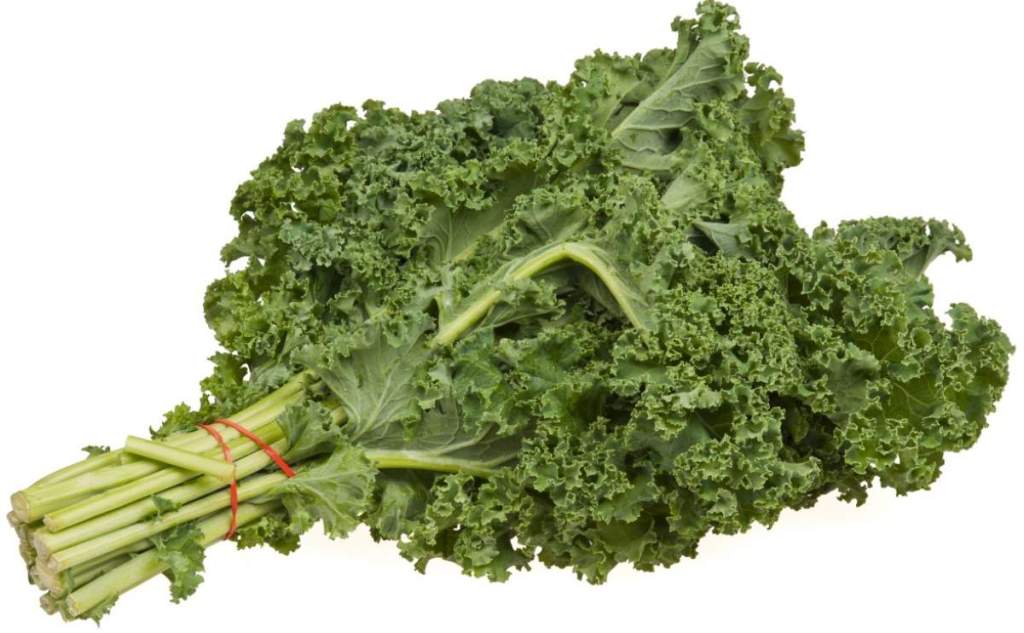Description: Kale is a domesticated form of Brassica oleracea, a member of the cabbage family. It is grown primarily for its leaves. Leaf cabbage is another name for it. Wild mustard is the source of this product. The word caulis means ‘cabbage’ in Latin. It was cultivated for food in the eastern Mediterranean and Anatolia as early as 2000 BCE. It is grown for edible purposes. Ferulic acid, a polyphenol found in kale, has varying levels, depending on the environment and genetics.
Types and Varieties: Kale comes in two varieties: Scotch, which has greenish-gray leaves, and Siberian, which has blueish-green leaves. There may also be tall and dwarf varieties. Dwarf Siberia, Dwarf Green, Blue Curled, and Tall Green are the most commonly grown varieties. Most people prefer dwarf varieties.
In the interior of the rosette of many varieties of kale and cabbage, there are brilliant white, red, pink, lavender, blue, or violet leaves that are grown primarily for their ornamental leaves. The use of kale leaves in vegetable bouquets and wedding bouquets is on the rise.
Soil and Climate Requirements: As one would expect from the variety name, kale is a hardy winter crop that can be grown throughout the winter if the ground does not freeze. It is our most hardy vegetable crop and matures in 55 to 65 days. It is grown as a very early crop or a late fall crop.
For garden purposes, the plants may be cultivated in late summer and harvested late in the fall or allowed to go through the winter for harvesting as early as over-wintered spinach. Soil that is well-drained and supplied with lime and organic matter will grow healthy kale. Well-drained bottomland that does not flood in winter is good for crops. Kale requires an adequate supply of nitrogen, phosphorus, and potash.
Cultural Directions: A heavy application of manure or an excellent leguminous crop plowed under is an excellent preparation for the crop. Liquid fertilizer can be used in the garden. The seed is sown in the open in July or August for the fall crop, allowing 70 days of growing weather. A row of seeds is sown two to three feet apart, and the plants are thinned so they stand 12 to 15 inches apart. In the home garden, thinning may be done for greens. It is recommended that liquid fertilizers be applied as the plants grow.
If the plants are set out early in the spring from seedlings grown indoors, they should be set in a transplanting solution and side-dressed. The older leaves may be picked off for use, leaving the center leaves to keep the plants growing. Of course, the center leaves are the most tender and it may be desirable to cut off the whole plant if enough plants are available.
General recommendations: Kale is not as tasty as cabbage. However, because it can be grown and harvested in the garden at a time when cabbage is not available, it is a desirable addition to the kitchen garden. When cabbage is on the market, kale is too low for profit in localities where it can be harvested during the winter.
There are, however, some possibilities. Because of the nature of the plants, the number of plants per acre is low. Although the yield on volume is very high, it has its limitations as a commercial crop. In cold climates, it may be grown during the summer season, but where the season is hot and dry the plants become a very poor food crop.
The plants, if well cared for, look beautiful grown in a pot. From an ornamental standpoint, they might be worth considering. Effortlessly ruffled leaf margins and the variety of colors make it attractive as a table centerpiece.
Insects and Diseases: Kale is attacked by the same pests as cabbage and should be treated the same way.
Read More – Apricots – The World’s Healthiest Fruit
